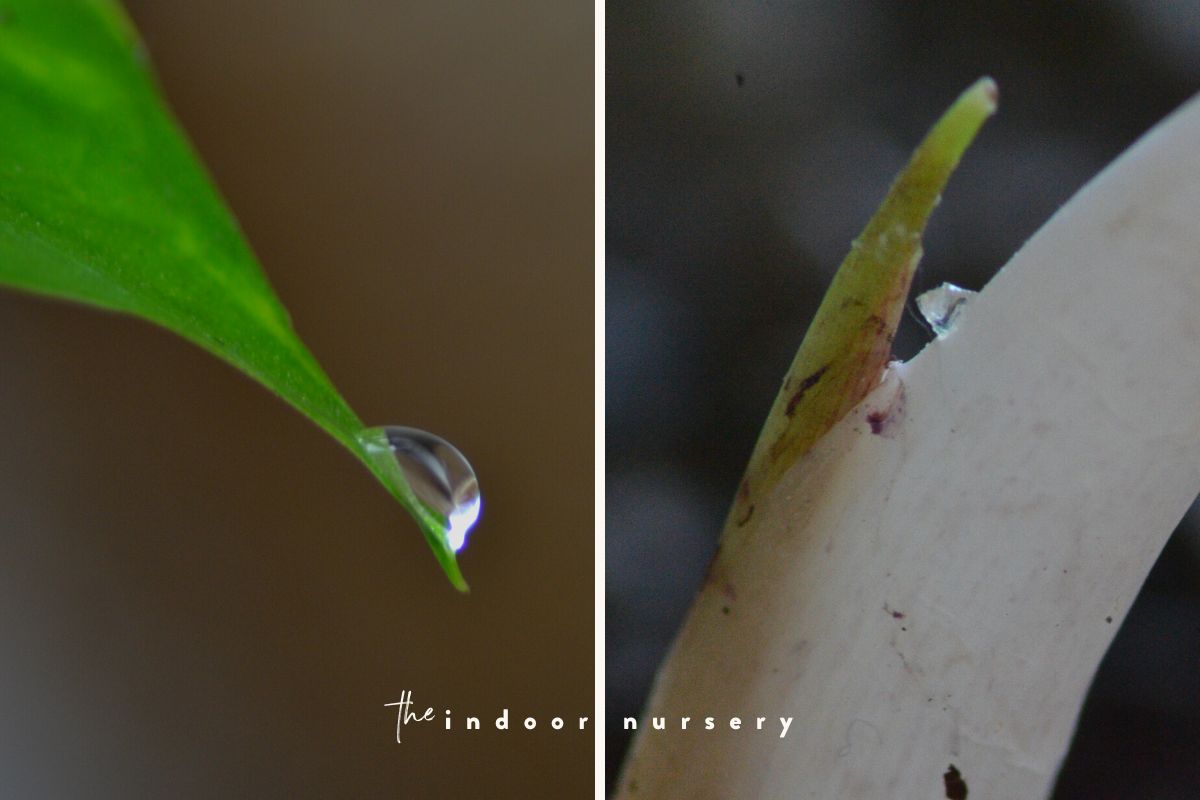Have you ever noticed your house plants dripping water? Well, it’s a common natural occurrence and there are two main reasons behind the dripping water.
I’ve had the recent pleasure (and displeasure) of experiencing both types of dripping water.
In this article, we’ll explain the science behind plant leaves dripping water and how to make sure your indoor plants remain healthy and happy.
Causes of water drops on plants
There are four reasons why your plants are dripping water, and for the most part your plants are probably okay. Let’s go through each of these so you can learn more about your plant’s natural processes.
- Transpiration
- Dew
- Guttation
- Oedema
How transpiration causes water droplets
The main cause of water drops on plants is a process called transpiration. Transpiration is the process of water movement through a plant and its evaporation from the leaves.
Plants release water through stomata, which are small leaf pores found on the undersides of their leaves. During the day, when the stomata are open, water from inside the plant is lost through evaporation. As the evaporation rate increases, so too does the amount of water released, causing moisture on the leaves’ surfaces.
Transpiration is the process of water movement from the roots to the leaves, where it evaporates from the plant. The transpiration rate increases as the environmental conditions become more favorable, such as when there is ample sunlight and high humidity. This can result in more water being lost than is absorbed by the plant, leading to the formation of droplets that form on the leaves, stems and flowers.
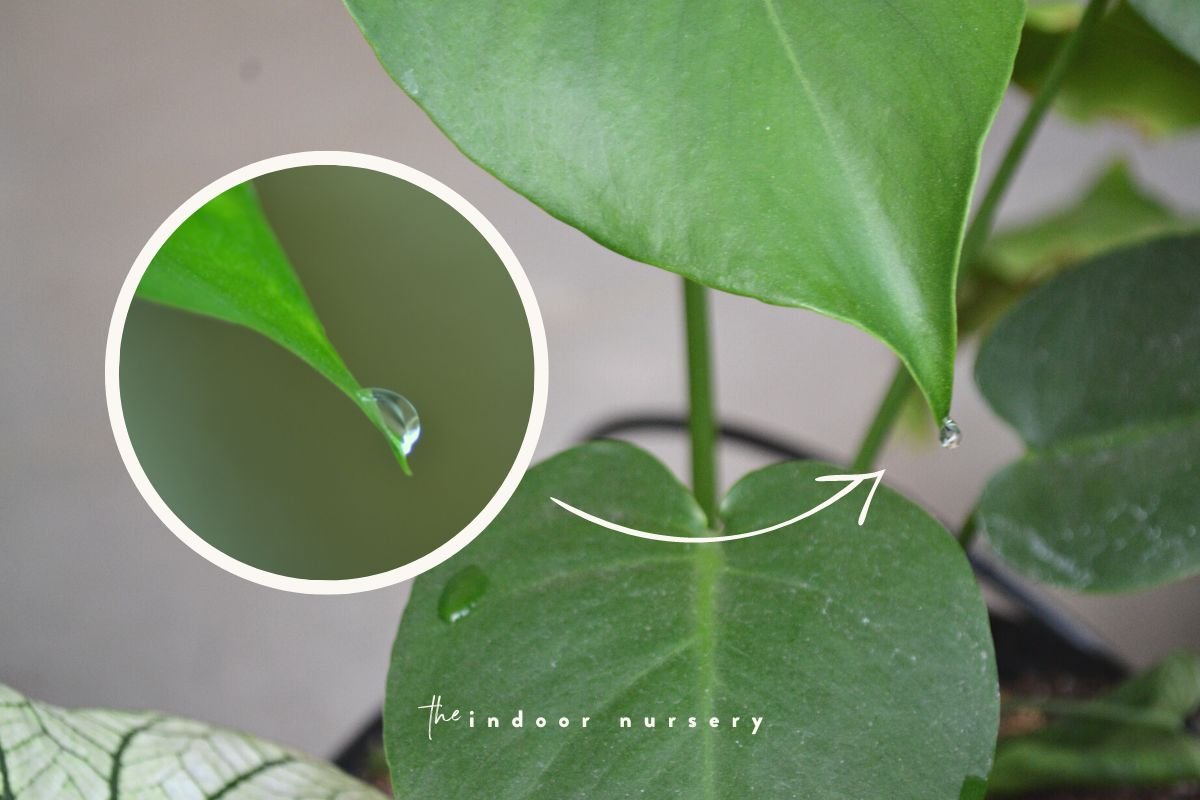
You can see this process happening in my split leaf philodendron, where just a droplet hangs from the edge of the plant leaves after first being pushed out of the leaf pores.
You can see that this indoor plant is generally happy. The plant’s leaves are firm and green and the soil moisture is at an okay level.
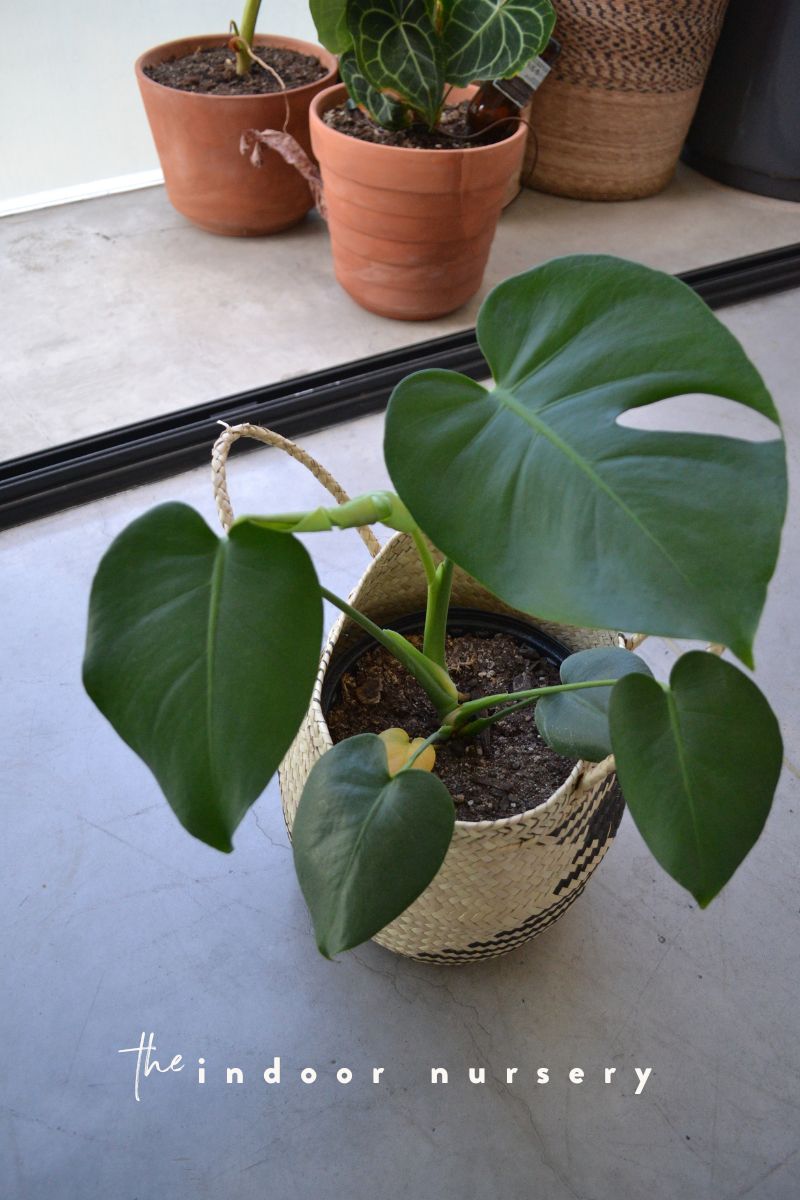
I wasn’t really concerned about my plant’s health, I was just wondering why there was water dripping from its leaves every morning. 😊
Dew
Dew, on the other hand, is a type of condensation that occurs when the air around the plant cools down. As the temperature drops, the water vapor in the air turns into liquid and forms dew on plants.
High humidity can also cause water drops on plants. High humidity occurs when there is too much moisture in the air or high temperatures. As the air gets more humid, the amount of water vapor in the air increases, which can lead to the formation of water droplets on the plants.
Guttation
Guttation is a phenomenon where moisture is expelled from the plants because of high humidity, temperature, and/or moisture levels in the soil. This water comes from inside the plant and is pushed out through small openings in the leaf margins, called hydathodes. Guttation can occur when the air is too saturated with water vapor and the soil is wet.
The plant responds by pushing excess moisture out through small openings in the leaf margin. This is actually beneficial for the plant, as it removes excess water that could otherwise cause root rot.
Oedema
Overwatering is a common cause of oedema. While plants need water to survive, it is possible to give them too much. Too much water can cause the plant’s roots to rot and stunt its growth. And if you’re not careful, this will lead to oedema and certain death.
To prevent overwatering, always check the soil before watering and make sure it is not overly saturated. A moisture meter can help with this.
I recently had the unfortunate experience of oedema, too.
While I was away on vacation, I set my indoor drip irrigation system on a weekly watering schedule. For most houseplants that I own, this worked out well. For one poor indoor plant, this proved to be devastating. When I got home from my vacation, I was greeted with a very plump plant covered in water droplets all along its stem.
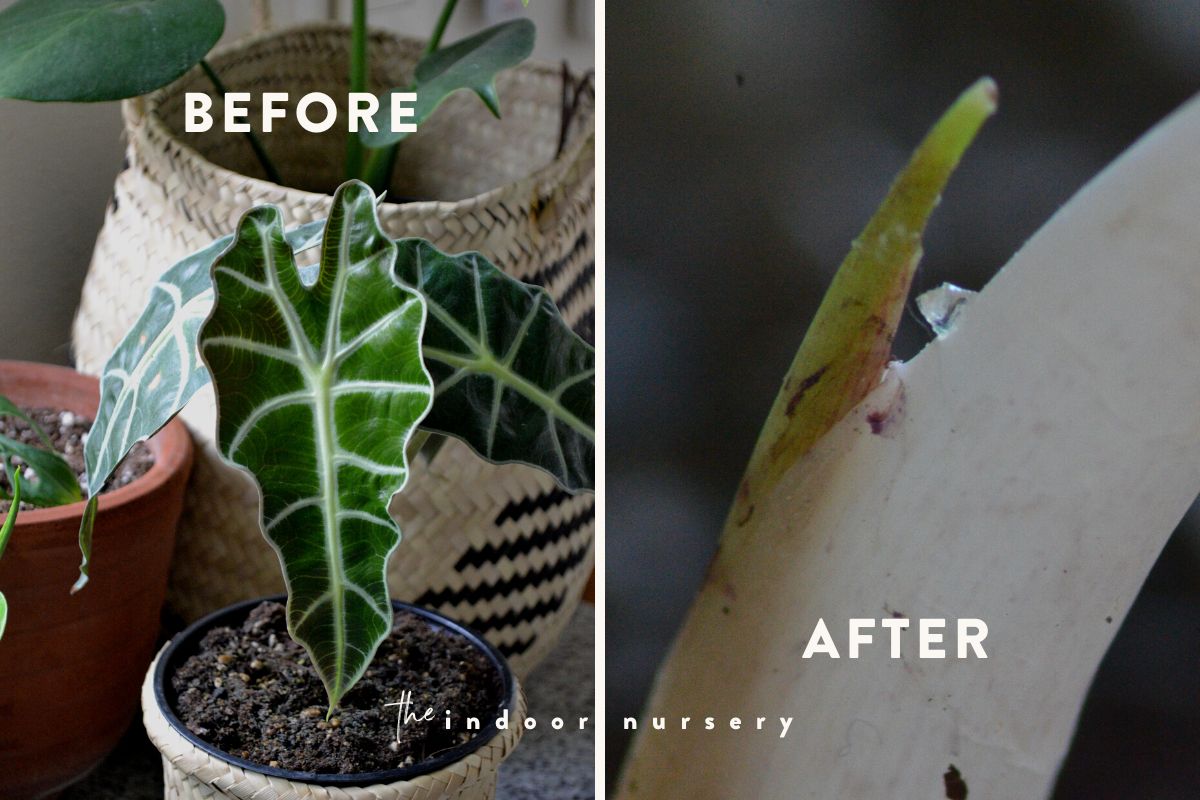
For a few weeks, it oozed this fluid. It seemed like the soil couldn’t dry out because it was kept indoors, where relative humidity is high. So I put it on the balcony for some fresh outside air, and it finally stopped oozing water from its stem…
…instead, it slumped over in defeat. Now, a small green new leaf is forming and I’m hopeful that it will bounce back!
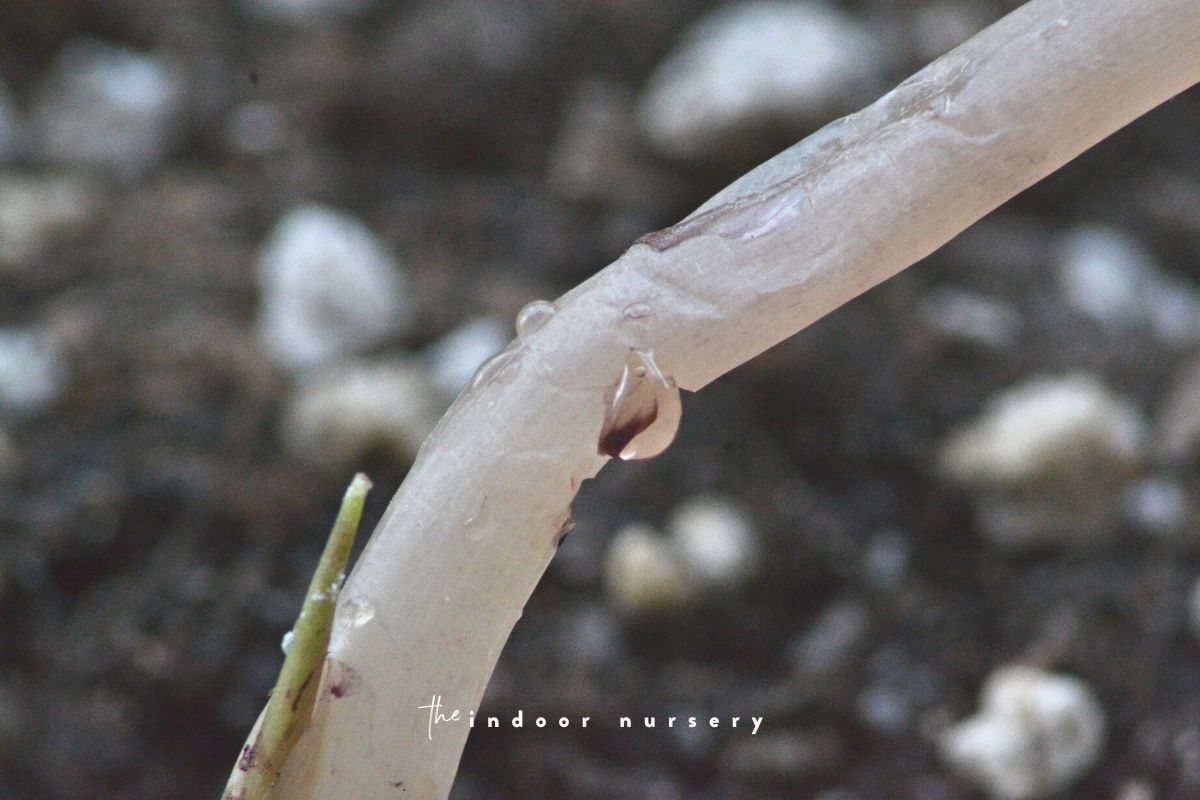
Is dripping harmful for my plants?
Water droplets on plants are usually not a problem, but if you notice that your plants are engorged and oozing water out of its surfaces, then yeah. It’s a problem (and it’s called oedema). But by then, you’d already be onto it. As you can see with my two plants, one was clearly trying to release the excess moisture from the soil and the other was clearly thriving in this natural process.
more about common questions
- How To Get Rid Of Scale On Plants
- How To Treat A Magnesium Deficiency In Cannabis
- It’s Not O-K: Potassium Deficiency in Cannabis
- How To Make Pothos Fuller (In 5 Minutes)
- Save Your Overwatered Monstera In 4 Steps (And How Not To Do It Again)
- Scale On Monstera: What To Do And How To Save It
- Common Calathea Problems and How to Fix Them

